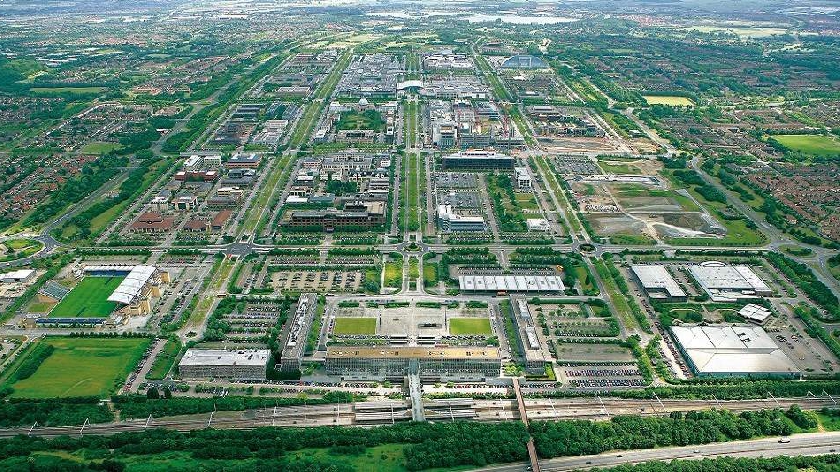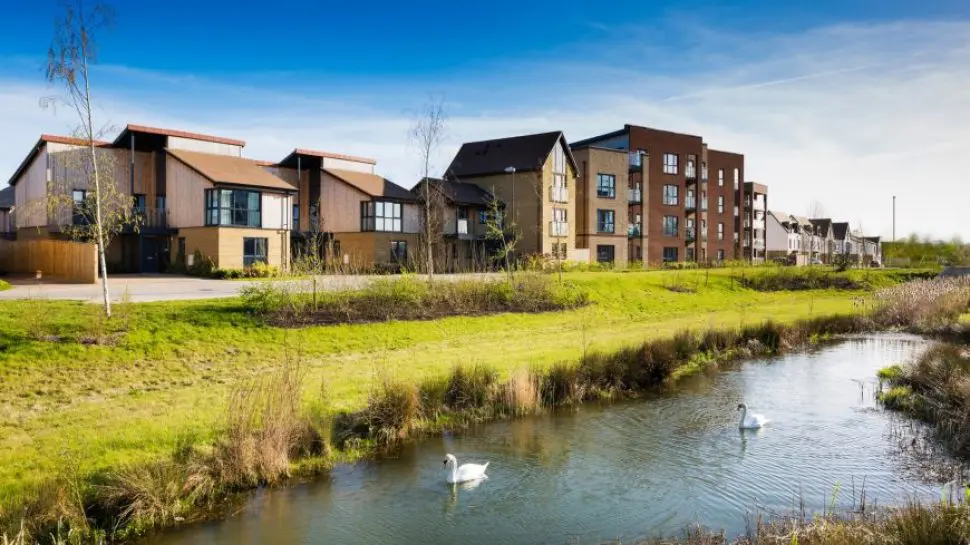Yes, Milton Keynes can be a nice place to live for many people due to its high standard of living, green spaces, and good transport links. The city offers job opportunities and affordable housing.
However, some may find its planned development lacking in architectural diversity, and traffic congestion can be a challenge during peak hours. The cultural scene is perceived by some as limited. Overall, whether it’s a nice place to live depends on individual preferences and priorities.
Here, you will see the details about this place
Prime Residential Areas in Milton Keynes

Milton Keynes known for its dynamic neighborhoods, offers a variety of prime residential areas catering to diverse preferences. Whether you’re drawn to historical charm, green spaces, or modern developments, here are some of the best places to live in Milton Keynes.
1. Stony Stratford: Timeless Elegance
Located northwest of Milton Keynes, Stony Stratford exudes traditional charm as a market town. It boasts some of the area’s finest Victorian and Edwardian properties. Positioned along the River Great Ouse, Stony Stratford features a lively town center with an abundance of pubs and restaurants, creating a captivating living experience.
2. Campbell Park: Urban Oasis
Campbell Park, nestled in the heart of it, offers an urban oasis alongside the Grand Union Canal. Encompassing districts like Oldbrook, Fishermead, and Woolstone, this green space provides a serene residential option while being just a short five-minute walk from central Milton Keynes. Ideal for both buyers and renters seeking a harmonious blend of nature and accessibility.
3. Great Linford: Riverside Serenity
North of Milton Keynes, the picturesque village of Great Linford sits along the Grand Union Canal. Incorporated into the town in 1967, it offers a peaceful setting. Noteworthy is Linford Manor, now a recording studio owned by MK Dons FC chairman Pete Winkelman. Great Linford combines historical charm with scenic surroundings.
4. Village: Historical Heart
Serving as the historical heart of the town, Milton Keynes Village is centered around Middleton Park. Here, buyers and renters encounter a diverse mix of original properties and modern family homes. With the convenience of the nearby M1 motorway, commuting is made easy from this historical yet well-connected area.
5. The Shenleys: Contemporary Village Living
Comprising villages such as Shenley Wood, Shenley Lodge, and Shenley Church End, The Shenleys have evolved with Milton Keynes’s growth. Located near the town center, these villages offer an appealing mix of family homes, including contemporary developments. The Shenleys represent a harmonious blend of modernity and community living.
6. Tattenhoe: Modern Tranquility
Situated in the southwest corner of Milton Keynes, Tattenhoe presents buyers and renters with modern properties surrounding the district’s 16th-century church and monastery. This area seamlessly combines historical elements with contemporary living, providing a tranquil residential experience.
7. Loughton: Connectivity and Diversity
Close to both the town center and Milton Keynes Central station, Loughton offers a diverse housing landscape. Home to a mix of modern family properties and traditional village homes, Loughton provides residents with easy access to urban amenities and transportation hubs.
Top Compelling Reasons to Choose Milton Keynes as Your Next Home
Are you considering a move to Milton Keynes? This vibrant town in Buckinghamshire offers a myriad of benefits that make it an attractive place to live. From economic growth to excellent transport links, here are 7 compelling reasons to choose Milton Keynes as your next home.
1. House Prices on the Rise
In recent years, it has witnessed a significant increase in property values, with homes experiencing a growth of over 35%. Despite the average home cost being £329,751, it remains more affordable compared to neighboring areas like High Wycombe and Amersham.
Also, new developments in Wavendon, Campbell Park, Oxley Park, and Brooklands provide diverse housing options, and first-time buyers can benefit from developer incentives like “help to buy” schemes.
2. Thriving Rental Market
Moreover, it boasts a buoyant rental market, ranking among the top ten most in-demand locations for rental properties in the UK. With 225 vacant homes, the town offers a variety of rental options, making it an ideal choice for those navigating the current property market uncertainties. Average monthly rents include £651 for a 1-bedroom flat, £950 for a 2-bedroom property, £1,132 for a 3-bedroom house, and £1,771 for a 4-bedroom home.
3. Cost of Living Advantage
While the cost of living is on the rise across the UK, it provides a favorable balance. Compared to larger cities like London, living in Milton Keynes offers a more affordable lifestyle.
For example Without rent, an estimated monthly expense of 3,136.3$ (2,517.7£) is incurred by a family of four. The projected monthly expenses for a single person, without rent, are 933.4$ (749.3£).
Moreover, to further reduce costs, residents can explore budget-friendly stores like Aldi and Lidl, utilize price comparison websites, and consider cashback apps such as TopCashBack. The town’s produce market is also an excellent option for affordable fresh produce.
4. Exceptional Transport Links
Furthermore, it is renowned for its exemplary transport links, making it a popular choice for buyers. Situated alongside the M1 and A5, the town ensures convenient car travel, with London accessible in just 30 minutes via Milton Keynes Central station.
Additionally, a network of train stations, long-distance coaches, and National Cycle Network routes 6 and 51 enhances connectivity. London Luton Airport, only 26 miles away, provides international travel options.
5. Diverse Culinary Scene
With over 350 restaurants, Milton Keynes caters to all tastes and budgets. From affordable options like Camphill Restaurant and Wetherspoon to mid-range choices like The Whisk Kitchen & Bar and Ask Italian, to upscale experiences at Brasserie Blanc and Woburn Brasserie, the town offers a diverse culinary landscape.
6. Educational Excellence
For families considering Milton Keynes, the town provides an extensive range of educational opportunities. With over 110 schools, including 30 rated ‘Outstanding’ and 66 rated ‘Good’ by Ofsted, parents have ample choices. The town also hosts grammar schools, independent schools, Milton Keynes College for further education, and the Open University for distance learning.
7. Abundant Recreational Activities
Living in Milton Keynes means access to a plethora of recreational activities. Thrift Farm, a 52-acre farm and Rural Training Centre offers an educational and enjoyable experience for families. For those seeking indoor excitement, Snozone Ski Slopes, the UK’s largest snow center for indoor skiing and snowboarding, provides a unique and accessible snow experience.
Pros and Cons of Living in Milton Keynes

Pros:
Good Quality of Life:
- It offers a high standard of living, characterized by abundant green spaces, parks, and lakes, creating a pleasant environment for those who appreciate a countryside lifestyle.
Excellent Transport Links:
- Enjoying superb connectivity, it boasts direct train routes to London and Birmingham, along with easy access to major road networks like the M1 and A5, ensuring convenient travel options.
Strong Job Market:
- The city provides ample job opportunities, particularly in thriving industries such as logistics, IT, and retail, contributing to a robust and diverse employment landscape.
Affordable Housing:
- In contrast to many southern towns and cities, Milton Keynes offers relatively affordable housing options. Whether renting or buying, a variety of properties are available to suit different preferences and budgets.
Cons:
Lack of Character:
- Critics argue that Milton Keynes lacks the character and charm found in older towns and cities, as it was planned and established in the 1960s. Some may find its architectural uniformity less appealing.
Traffic Congestion:
- Despite its excellent transport links, it is prone to traffic congestion, especially during peak hours. Public transportation, particularly buses, may not be the most reliable, leading to a reliance on alternative transportation like taxis or ride-sharing services.
Taxi Service Issues:
- Some residents report issues with certain taxi services, citing rudeness, impoliteness, and occasional overcharging. Finding addresses can also be challenging, impacting the convenience of using taxis.
Limited Cultural Scene:
- While Milton Keynes offers a variety of shops, restaurants, and leisure facilities, critics argue that the city lacks a robust cultural scene. Major museums or art galleries are few, potentially limiting cultural and recreational activities.
Spread-Out Layout:
- Due to its size, it may feel spread out, with certain areas accessible primarily by car. The abundance of roundabouts can be confusing and may contribute to a sense of disconnection in the town’s layout.
FAQ’s
1. Is Milton Keynes a good city to live?
Yes, Milton Keynes is indeed a desirable city to live in, boasting a sprawling urban design, abundant job opportunities, and a vibrant community. Many young professionals are choosing to make the move to this hidden gem in the heart of England.
2. Is Milton Keynes expensive to live?
No, Living costs in Milton Keynes are slightly higher than the national average but significantly lower than London. Consumer prices are 27% lower than London (excluding rent), and rental prices are 50% cheaper, making it a relatively affordable place to live.
3. Is Milton Keynes a wealthy area?
Yes, Milton Keynes exhibits a wealth disparity among its neighborhoods. Areas like Broughton, Middleton & Kents Hill have an average annual household income of £65,700, while Stacey Bushes & Fullers Slade averages £34,600 annually.
4. Is Milton Keynes a good place to work?
Yes, Milton Keynes is renowned as a ‘smart city’ with a strong economy, offering plenty of highly skilled jobs. The city is involved in innovative projects like autonomous vehicles and has a unique blend of history, including rural villages and bustling towns.
5. How many Muslims are in Milton Keynes?
Recent figures show a notable increase in the Muslim population in Milton Keynes, with 20,484 residents identifying as Muslim in the latest survey, up from 11,913 in 2011.
6. Why is Milton Keynes so popular?
Milton Keynes is popular for its unique features such as roundabouts, concrete cows, and a vibrant town with plenty of green spaces resembling the Buckinghamshire countryside. The city’s network of redways, pedestrian, and cycling paths also adds to its charm.
7. What is a good salary in Milton Keynes?
The average salary in Milton Keynes is £34,260 per year in the United Kingdom. Entry-level positions start at £26,000, while experienced workers can earn up to £55,000 per year.
8. How many Indians live in Milton Keynes?
Information on the specific Indian population in Milton Keynes is not provided in the given context.
9. Is rent expensive in Milton Keynes?
Yes, Milton Keynes is one of the top five most costly places in the UK to rent a single room in a house or flat. The average cost is £634.83 per month, considerably lower than London but higher than several other cities in the UK.
Final Words
In conclusion, whether Milton Keynes is considered a nice place to live is subjective and depends on individual preferences and priorities. The city offers a high standard of living, green spaces, and good transport links, making it appealing to many.
However, some may find drawbacks in the planned architecture, traffic congestion, and a perceived limited cultural scene. Prospective residents should carefully weigh these factors based on their own lifestyle preferences and needs before deciding if Milton Keynes is the right fit for them.

